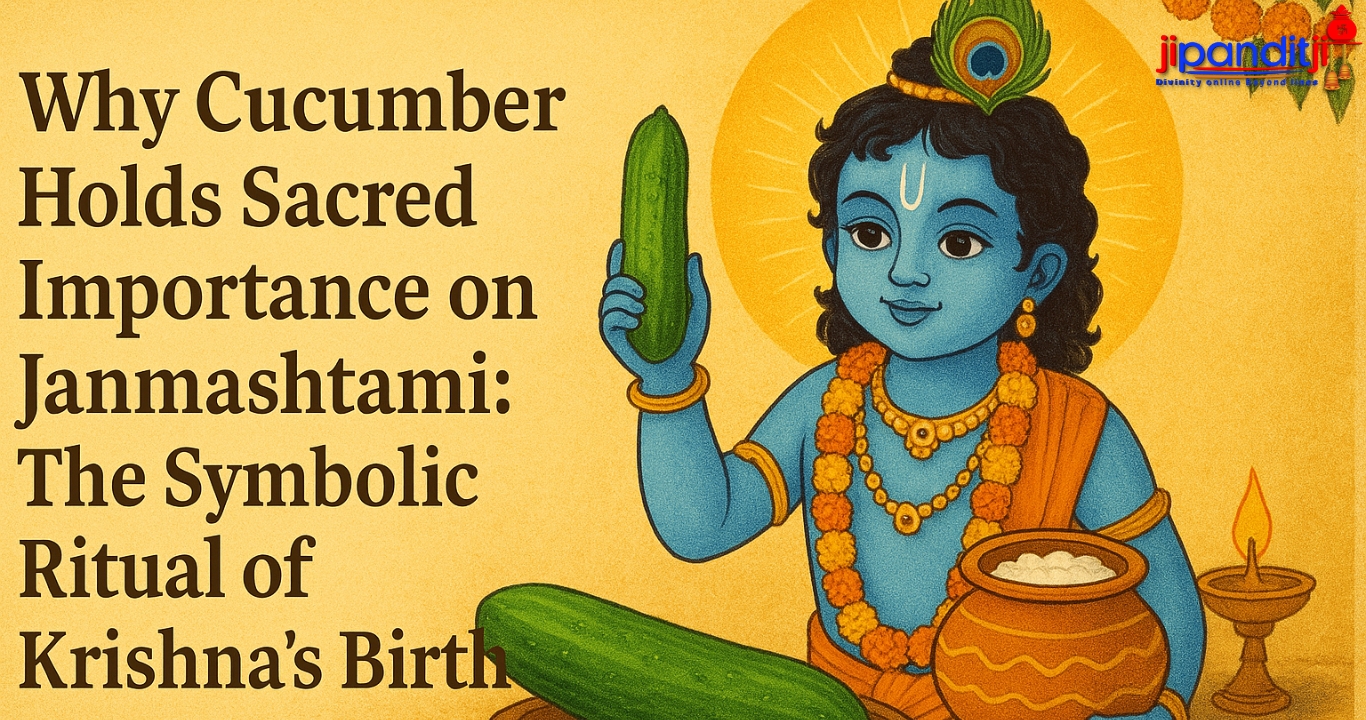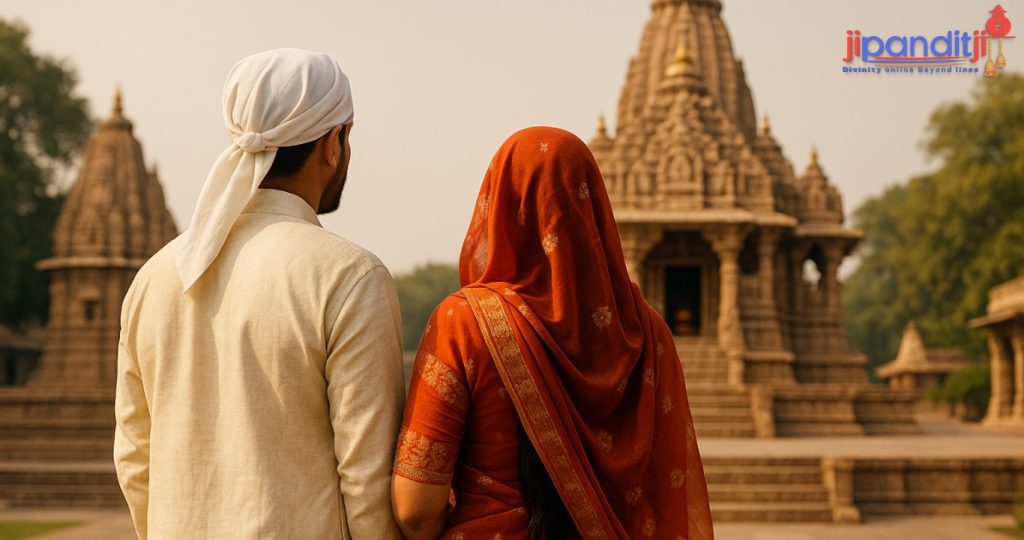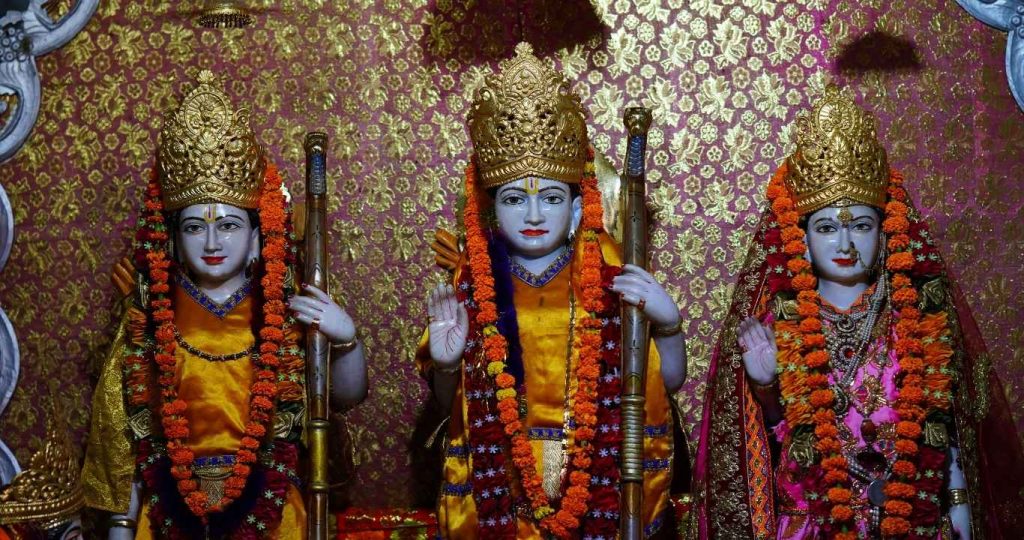Why Cucumber Holds Sacred Importance on Janmashtami: The Symbolic Ritual of Krishna’s Birth

Janmashtami, the divine celebration of Lord Krishna’s birth, is one of the most vibrant and spiritually rich festivals in Hinduism. While devotees across India observe the day with fasting, devotional songs, and midnight celebrations, there is one ritual that stands out for its deep symbolism — the cutting of a cucumber at midnight.
This seemingly simple act is, in fact, a spiritual representation of Krishna’s birth and holds centuries-old cultural significance. The cucumber is not just a fruit here; it becomes a sacred symbol of life, purity, and divine beginnings. Let us explore how and why this tradition is performed, and the profound beliefs behind it.
The Spiritual Symbolism of Cucumber
The use of cucumber in Janmashtami rituals is rooted in deep symbolism:
- Umbilical Cord Representation – The cucumber’s stem is considered symbolic of the umbilical cord that connects a child to its mother. Cutting the cucumber at midnight represents the moment Lord Krishna was separated from Mother Devaki’s womb.
- Seeds as Essence of Life – The seeds inside the cucumber signify life and potential. Removing them is symbolic of the completion of birth and the readiness to step into the world.
- Purity and Freshness – Cucumber is regarded as “shuddh” (pure) in Hindu rituals, making it an ideal offering to deities. Its cool, refreshing nature symbolizes vitality and divine blessings.
This symbolism transforms a humble vegetable into a sacred object during Janmashtami celebrations.
The Midnight Ritual — A Divine Reenactment
Janmashtami celebrations reach their climax at midnight, the traditional time of Krishna’s birth. The cucumber ritual is performed with precision and devotion:
- Selection of the Cucumber – A fresh, uncut cucumber is chosen, representing the unborn Krishna in the womb.
- Midnight Cutting Ceremony – Exactly at midnight, the cucumber is cut, symbolizing the cutting of the umbilical cord and Krishna’s emergence into the world.
- Removing the Seeds – The seeds are removed, representing the separation from the womb and the new life’s readiness to begin its journey.
- Offering to Lord Krishna – The cucumber, now purified, is placed before Krishna’s idol or cradle as part of the bhog (offering).
- Chanting and Celebration – Devotees sing bhajans, recite Krishna’s names, and rejoice with the chant “Nand Ke Anand Bhayo, Jai Kanhaiya Lal Ki!”
This act is more than a symbolic ritual; it is a moment of emotional connection with the divine event that occurred thousands of years ago.
Cultural and Religious Significance
The cucumber ritual is especially popular in Northern India, in regions like Uttar Pradesh, Bihar, and parts of Rajasthan, but its variations can be found in other states too. In rural communities, elders narrate the story of Krishna’s birth alongside this ritual, making it an educational and devotional experience for children.
In many households, this tradition is passed down through generations, preserving the spiritual essence and ensuring that cultural heritage remains alive. The cucumber becomes a tangible connection between modern devotees and ancient traditions.
Beliefs and Blessings Associated with the Ritual
Devotees believe that this ritual holds special blessings:
- Fertility and Motherhood – Women desiring children often perform or witness the cucumber cutting, believing it will bless them with healthy offspring.
- Good Health for the Family – Since cucumber symbolizes purity and freshness, it is believed to bring physical well-being to those who partake in the prasad.
- Spiritual Purification – Offering cucumber to Krishna is seen as a way to cleanse the mind and soul, attracting divine grace.
- Protection from Negativity – The ritual is thought to shield the household from evil influences.
These beliefs combine physical symbolism with spiritual intent, making the cucumber offering a multi-layered tradition.
Storytelling: The Birth of Krishna
According to Hindu scriptures, Krishna was born in the prison of Mathura at midnight, under extraordinary circumstances. Devaki, his mother, had been imprisoned by her brother Kansa, who feared the prophecy that her child would be his destroyer. When Krishna was born, a divine light filled the prison cell, and all shackles miraculously fell away.
The symbolic act of cutting the cucumber mirrors this divine moment — the release from confinement and the beginning of Krishna’s journey in the mortal world. The stem represents the umbilical cord, and its removal marks the transition from the divine womb into human existence.
Scientific and Seasonal Relevance
Interestingly, there may also be a practical and seasonal reason behind the choice of cucumber. Janmashtami falls during the monsoon season, which is when cucumbers are in peak harvest. Fresh, water-rich, and cooling, cucumbers not only have symbolic purity but also provide physical refreshment during the fasting period. This natural abundance may have cemented its role in the festival over time.
Modern-Day Observance
In today’s urban celebrations, while some customs fade, the cucumber-cutting ritual continues to be practiced by families who value tradition. With the rise of social media, many devotees now share pictures and videos of their midnight rituals, inspiring others to revive this beautiful practice.
Temples too often incorporate the cucumber offering into their Janmashtami celebrations, educating visitors about its meaning and encouraging participation.
Why This Tradition Should Continue
In a rapidly modernizing world, preserving such rituals is essential to maintain cultural identity. The cucumber-cutting ceremony is not just an act of devotion but a way to engage all generations in understanding and reliving the story of Krishna’s birth. It connects mythology with tangible action, making spirituality a lived experience rather than just a narrated tale.
Conclusion
The humble cucumber, in the context of Janmashtami, becomes a sacred vessel of meaning. Cutting it at midnight is far more than a festival custom — it is a devotional reenactment of one of the most celebrated births in Hindu tradition. By embracing this ritual, devotees not only honor Lord Krishna but also keep alive a practice that bridges the past and present, reminding us of the eternal joy and blessings associated with the birth of the divine child.







